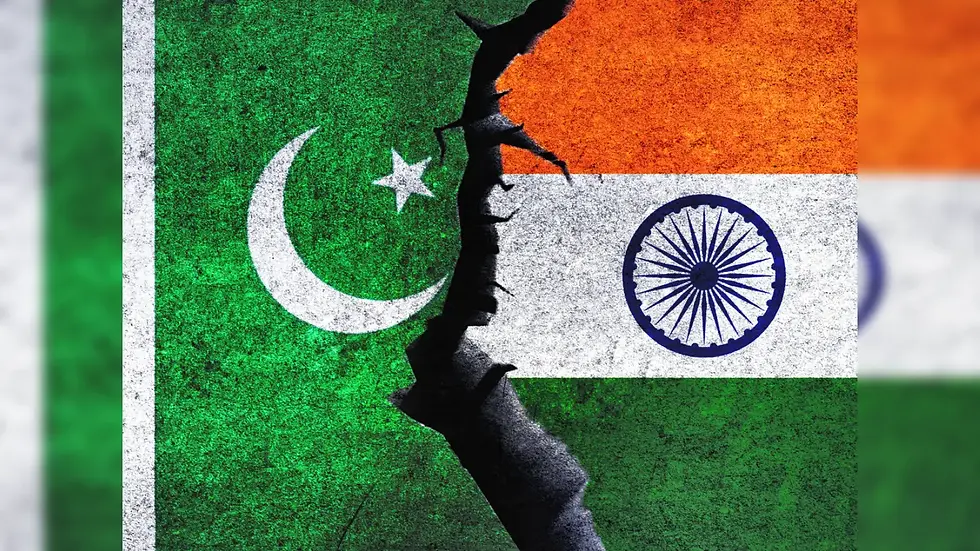Shimla Pact Between India and Pakistan
- Shreya Giri
- Aug 17
- 4 min read
The Shimla Pact, also known as the Shimla Agreement, holds a distinctive place in the history of South Asia as a landmark diplomatic document that redefined the relationship between India and Pakistan in the aftermath of the 1971 Bangladesh Liberation War. Signed on July 2, 1972, in the scenic hill station of Shimla, India, by Indian Prime Minister Indira Gandhi and Pakistan’s President Zulfikar Ali Bhutto, the pact was not just a peace agreement; it was an attempt to reshape the entire framework of bilateral engagement.

The accord aimed to resolve differences peacefully, lay the foundation for long-term cooperation, and avoid a repeat of the bloody conflicts that had plagued the subcontinent since Partition in 1947. The Shimla Pact remains one of the most significant bilateral agreements between the two nations, although its implementation and legacy continue to be debated.
The roots of the Shimla Pact lie in the Indo-Pakistani War of 1971, which was triggered by the political crisis in East Pakistan (now Bangladesh). The war lasted just 13 days, making it one of the shortest in history, but its impact was seismic. India’s military intervention in December 1971, in support of the Bengali nationalist movement, led to the defeat of Pakistani forces and the birth of an independent Bangladesh. Over 90,000 Pakistani soldiers were taken as prisoners of war (POWs) by India, marking one of the largest surrenders in modern history.
For Pakistan, the loss of East Pakistan was a humiliation that shattered its political and military confidence. For India, the victory reinforced its regional dominance but also created a massive diplomatic responsibility, what to do with the POWs, and how to ensure peace without permanently destabilizing Pakistan. Against this tense backdrop, the two nations agreed to hold high-level talks to chart a way forward.

The neutral, quiet setting of Shimla was chosen as the venue, away from the intense media and political scrutiny of the capitals. The Shimla talks began on June 28, 1972, and lasted for six days. The negotiations were marked by a combination of hard bargaining, personal diplomacy, and calculated strategic moves.
India’s Objectives:
Secure a formal recognition of the Line of Control (LoC) in Jammu and Kashmir.
Ensure that Pakistan agreed to resolve disputes bilaterally without involving external powers or the United Nations.
Create a stable environment to facilitate the return of prisoners of war and normalization of relations.
Pakistan’s Objectives:
Secure the immediate release of the POWs.
Avoid any arrangement that would permanently cede Jammu and Kashmir to India.
Regain lost territories captured by Indian forces in the western sector during the 1971 war.
Despite differences, both leaders were aware of the stakes. Bhutto, in particular, faced intense domestic pressure, as his regime’s legitimacy depended on securing the return of the POWs and salvaging some dignity after the military debacle. Indira Gandhi, confident after her military victory, nonetheless recognized the need to stabilize the subcontinent to avoid long-term hostility.

The agreement contained a series of principles and commitments designed to govern Indo-Pakistani relations going forward. The most significant provisions included:
Commitment to Peaceful Resolution of Disputes:Both nations agreed that their differences would be resolved only through bilateral negotiations or by other peaceful means mutually agreed upon. This effectively sidelined international mediation, including the United Nations, from the Kashmir issue.
Respect for the Line of Control:The ceasefire line in Jammu and Kashmir, established after the 1971 war, was to be recognized as the Line of Control. Both sides agreed to respect it without prejudice to their respective positions on the final settlement of the state.
Withdrawal of Troops:Troops from both nations would be withdrawn to their side of the international border. However, in Jammu and Kashmir, they would respect the newly demarcated Line of Control.
Restoration of Diplomatic Relations:The two countries agreed to work towards the normalization of diplomatic ties, including the exchange of ambassadors, resumption of communications, and restoration of trade.
Return of Prisoners of War and Civilians:India agreed to facilitate the release of the Pakistani POWs, and both countries committed to repatriating each other’s citizens held during the war.
Mutual Respect for Sovereignty and Territorial Integrity:The pact emphasized non-interference in each other’s internal affairs and respect for the sovereignty and territorial integrity of both states.

The Shimla Pact was groundbreaking for several reasons:
Shift from Multilateral to Bilateral Framework:For the first time, Pakistan agreed in writing that disputes with India would be settled bilaterally, marking a departure from its earlier strategy of seeking international arbitration.
Diplomatic Victory for India:India managed to secure an agreement that effectively froze the territorial status quo in Kashmir and legitimized the LoC as the de facto boundary.
Face-Saving for Pakistan:Although militarily defeated, Pakistan was able to secure the return of its soldiers and avoid making any binding concessions on the final status of Kashmir.
Long-Term Framework:The pact laid down a blueprint for future engagement, influencing the tone and content of Indo-Pak relations for decades to come.

The Shimla Pact’s legacy has been mixed:
Positive Aspects:
It established the LoC, which has largely remained the reference point for military and diplomatic discussions on Kashmir.
It reinforced the principle of bilateralism, which India continues to invoke in rejecting third-party mediation.
Negative Aspects:
The absence of a conflict-resolution mechanism allowed mistrust to fester.
Subsequent events—such as the Siachen conflict (1984), the Kargil War (1999), and recurrent cross-border terrorism—undermined its spirit.
Nonetheless, even after multiple breakdowns in relations, both nations have, at least nominally, continued to refer to the Shimla Pact as the guiding framework for engagement.

About the Author
Shreya Giri is a talented SEO content writer with a unique flair for captivating readers. With a bachelor's degree in geography, her passion for crafting exceptional content shines through in every word she writes. Shreya's expertise lies in her ability to seamlessly blend language and storytelling, effortlessly capturing the attention of her audience.
She is pursuing a Master's degree in geography and has a remarkable talent for transforming intricate concepts into captivating narratives that have a lasting impact. With Shreya, you can expect excellent, compelling content that will keep you engaged from beginning to end.
You can connect with her through-
My-Lekh profile- https://www.my-lekh.com/profile/shreyagiri3008/profile
LinkedIn profile- https://www.linkedin.com/in/shreya-giri-a0a607265
Email- shreyagiri3008@gmail.com





Comments